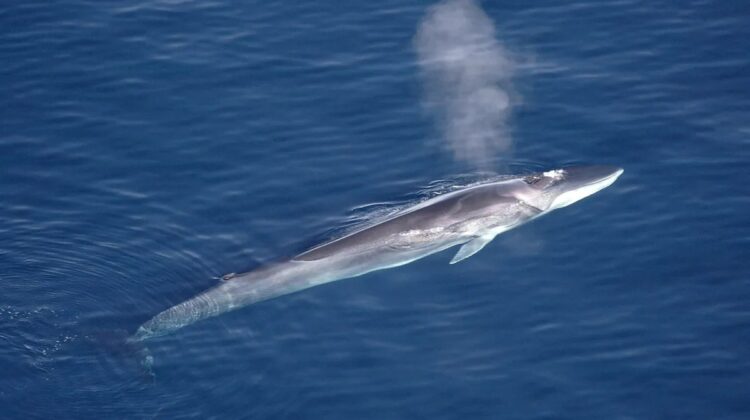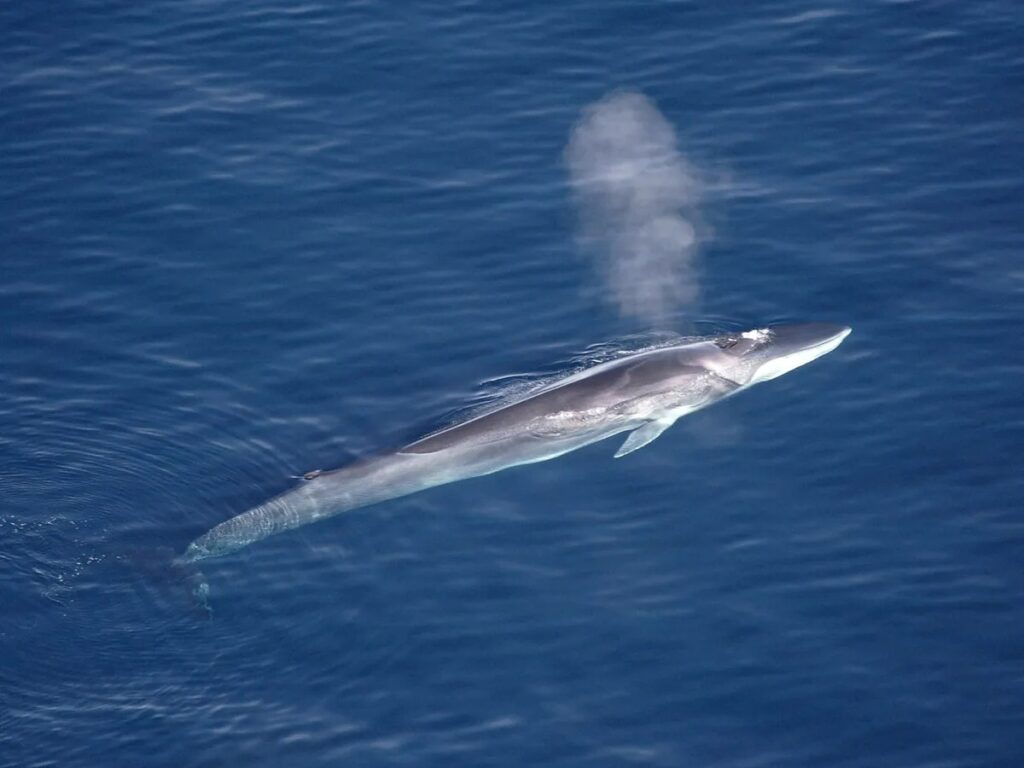
In a bold move to revive its struggling whaling industry, Japan has launched a state-of-the-art “mothership.” This new vessel, the Kangei Maru, signifies Japan’s serious commitment to whaling.
The Kangei Maru, a whaling factory ship, departed from Shimonoseki port on May 21. Costing $48 million, this enormous ship measures 112.6 meters (369 feet) in length and 21 meters (68 feet) in width, with a weight of about 9,299 tons. It is built to cover distances up to 13,000 kilometers (almost 8,100 miles), enough to reach the Antarctic Ocean.
As a mothership, the Kangei Maru will serve as a central hub for smaller whaling boats, which will bring back harvested whales. Kyodo Senpaku, the company owning the vessel, has equipped it with an onboard processing unit to butcher, check for quality, and freeze whale meat.

Image credit: NOAA Fisheries
“We will work as one to maintain whaling culture for eternity,” stated Hideki Tokoro, president of Kyodo Senpaku, at the ship’s departure ceremony.
This development follows the Japanese government’s announcement on May 9, allowing whalers to hunt fin whales, increasing the commercial whaling species to four, alongside minke, Bryde’s, and sei whales.
However, this escalation in whaling activities has provoked international outrage. Conservation organizations have criticized it as a regressive step.
“These new plans to hunt fin whales are incredibly alarming. These are the second biggest whale on earth. Killing whales causes significant suffering due to the size of the animals, not to mention the fact that considerable time often passes between the first harpoon strike and death,” said Nicola Beynon, head of campaigns at the Australian branch of the Humane Society International (HSI), regarding the Kangei Maru’s launch.
Adam Peyman, HSI’s director of wildlife programs, added, “All whale species are battling a range of threats in their marine environment including climate change, noise pollution, ship strikes, and fisheries bycatch. There is no nutritional, scientific, or moral justification for killing these magnificent ocean giants, so the launch of the Kangei Maru is a chilling sight at a time when the imperative to conserve rather than kill whales is so urgent.”
Japan resumed commercial whaling in June 2019 after controversially withdrawing from the International Whaling Commission (IWC). The IWC’s moratorium on commercial whaling, in place since 1982, was meant to protect whale populations, although whaling for scientific research and Aboriginal Subsistence Whaling was permitted.
Despite over 80 nations signing the 1986 agreement to ban commercial whaling, some countries, including Japan, Norway, Denmark/Greenland, Russia, and Iceland, continued whaling under the guise of scientific research.
Japan’s renewed effort to bolster whaling has been accompanied by a strategic PR campaign countering the “one-sided anti-whaling media that dominates the world.” They argue that many whale populations have recovered sufficiently to be a “concern for marine ecosystems, consuming several times more fish than humanity’s entire fishing catch.”

While some whale populations have indeed recovered due to the IWC’s halt on whaling, many still struggle to reach pre-whaling numbers. The ones that have recovered face new threats like climate change and pollution.
Furthermore, commercial whaling involves slow, agonizing deaths for whales, adding to the ethical concerns against such practices.

Leave a Reply